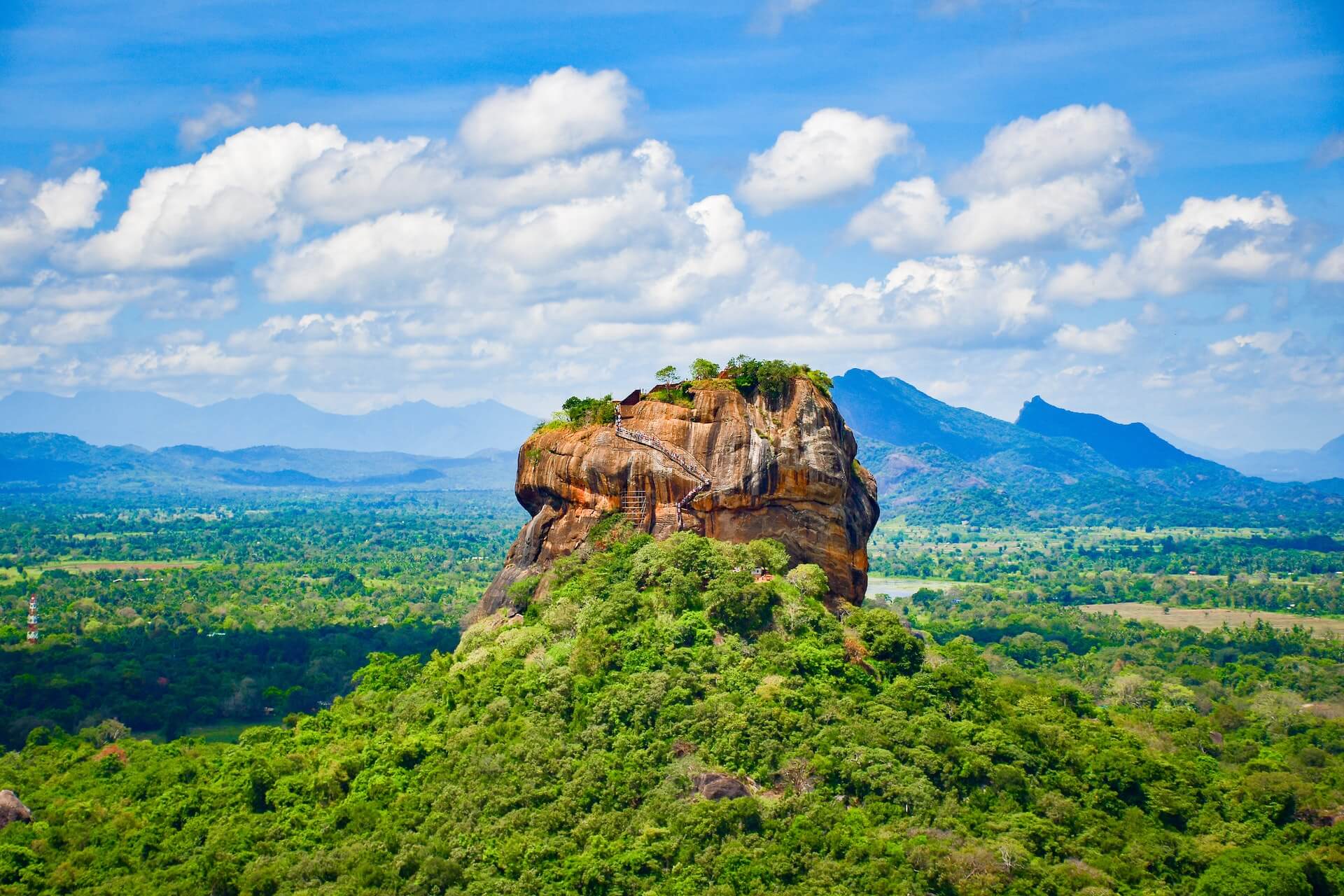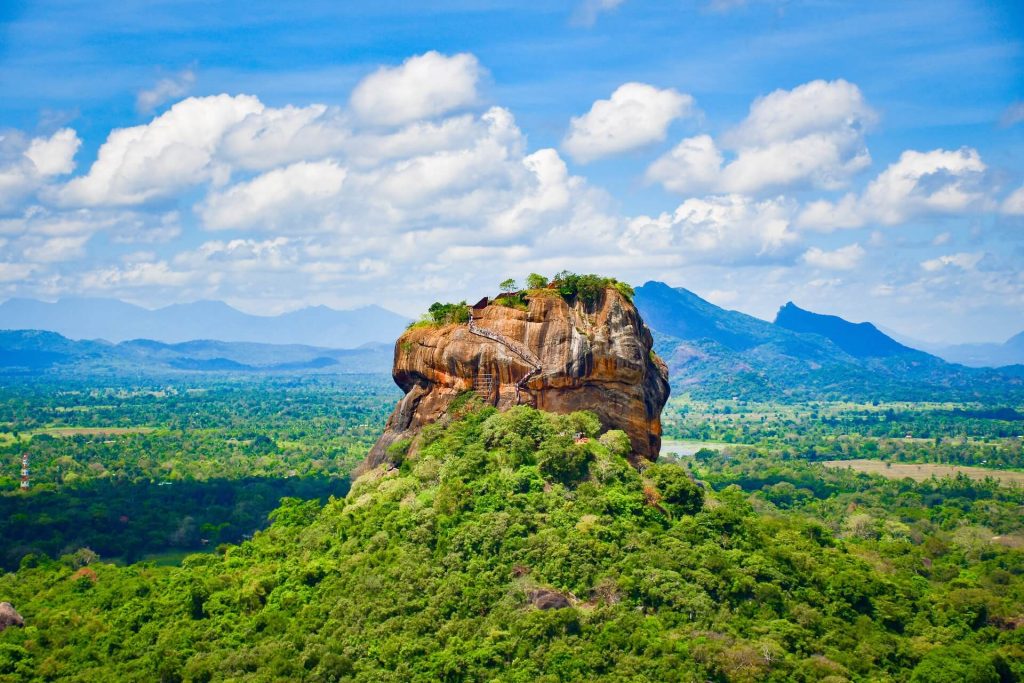Discover Sigiriya: The Majestic Rock Fortress of Sri Lanka
October 13, 2024

Tucked away in the heart of Sri Lanka’s Cultural Triangle lies one of the most extraordinary and awe-inspiring landmarks in the world: Sigiriya. Often referred to as the “Eighth Wonder of the World,” this ancient rock fortress is a masterpiece of ancient engineering, art, and culture. For centuries, it has captivated the imaginations of historians, travelers, and adventurers alike. Whether you’re a history enthusiast, a nature lover, or an adventurer seeking stunning views, Sigiriya is a must-visit destination on your journey through Sri Lanka.
A Glimpse into History: The Story Behind Sigiriya
Sigiriya, also known as Lion Rock, is not just a geological marvel—it’s a monument steeped in history. Rising 200 meters above the surrounding jungle, this massive rock served as a royal citadel during the reign of King Kashyapa in the 5th century AD. According to legend, Kashyapa, who seized the throne from his father in a bloody coup, built the fortress as a place of protection and luxury. Its strategic location made it virtually impenetrable, while its grand palaces and gardens symbolized Kashyapa’s power and artistic prowess.
The name Sigiriya comes from “Sinha-giri” or “Lion’s Rock,” a nod to the giant lion statue that once guarded the entrance to the royal palace, with the rock’s summit believed to have housed the king’s throne room. Today, visitors can still see the large lion’s paws carved into the stone, remnants of the grand entrance that once dominated the rock face.
The Climb: Reaching the Summit
Climbing Sigiriya is an unforgettable experience. As you make your way up the winding stairways, you’ll be treated to breathtaking views of the surrounding landscape, which is a lush tapestry of forests, villages, and reservoirs. About halfway up, you’ll encounter The Mirror Wall, an ancient polished wall that still retains graffiti left by visitors over 1,000 years ago, marveling at the beauty of the site.
One of the most mesmerizing features of the climb is the Sigiriya Frescoes, a series of beautifully preserved ancient paintings depicting celestial maidens. These frescoes, found along the path to the summit, offer a glimpse into the artistic brilliance of the ancient kingdom.
At the top, you’ll find the ruins of King Kashyapa’s palace, complete with foundations of rooms, water tanks, and stunning terraces. The panoramic views from the summit are nothing short of spectacular, offering sweeping vistas of the Sri Lankan countryside and beyond.
The Ancient Gardens: A Marvel of Innovation
The base of Sigiriya is home to one of the oldest landscaped gardens in the world. These gardens are an integral part of the site’s allure, showcasing advanced water management systems that are still admired by engineers today. Divided into water gardens, terraced gardens, and boulder gardens, they feature sophisticated fountains, canals, and pools that were used to cool the royal complex.
The water gardens, with their intricate layout and functioning fountains (which still operate during the rainy season), are a testament to the ingenuity of ancient Sri Lankan hydraulic engineering. The terraced gardens climb in step with the rock, and the boulder gardens provide a serene and mystical environment, making it a delightful place to explore before or after the climb.
The Cultural Significance of Sigiriya
Sigiriya is not just an architectural and historical treasure; it is a site of immense cultural significance for Sri Lankans. The site was declared a UNESCO World Heritage Site in 1982 due to its rich cultural and archaeological heritage. It stands as a symbol of Sri Lanka’s ancient civilization, representing a time when the island was a thriving center of innovation and artistry.
For Sri Lankans, Sigiriya is a source of national pride, and it continues to inspire fascination for travelers who visit its walls, imagining the lives of the ancient people who once walked the same paths.
When to Visit Sigiriya
Sigiriya can be visited year-round, but the best time to visit is during the dry season between January and April, when the weather is pleasant and the skies are clear, offering unobstructed views from the summit. Early morning or late afternoon climbs are recommended to avoid the midday heat, and also to catch the sunrise or sunset, which bathe the rock and the landscape in golden light.
What to Expect When You Visit
A visit to Sigiriya is a journey into Sri Lanka’s rich past. The experience is both a physical adventure and a cultural deep-dive. Be prepared for a moderately challenging climb to the summit, but rest assured that the reward—a breathtaking view and an intimate connection with history—makes every step worthwhile.
Visitors are encouraged to:
- Wear comfortable shoes suitable for climbing.
- Bring plenty of water, especially if visiting during the hot months.
- Take time to explore the gardens and frescoes before reaching the summit.
- Respect the historical significance of the site by following guidelines to preserve its ancient beauty.
Enhance Your Experience with MMI Travels
At MMI Travels, we offer expertly guided tours to Sigiriya that provide deeper insights into its history, architecture, and cultural significance. Our local guides share fascinating stories of King Kashyapa’s reign and the secrets behind the incredible engineering feats of ancient Sri Lanka. With us, your visit to Sigiriya becomes more than just a climb—it’s a journey into the heart of a forgotten kingdom.
Whether you’re seeking adventure, history, or simply breathtaking views, Sigiriya is a destination that should not be missed on your Sri Lankan itinerary. Explore it with MMI Travels and experience this world wonder like never before.
Plan Your Visit Today
Ready to explore the wonders of Sigiriya? Contact MMI Travels to create a personalized tour that includes this iconic site and many other hidden gems across Sri Lanka.
Recent Posts
-
 Discover Sigiriya: The Majestic Rock Fortress of Sri Lanka13 Oct 2024
Discover Sigiriya: The Majestic Rock Fortress of Sri Lanka13 Oct 2024 -
 Why Sustainable Travel Matters: How MMI Travels Is Leading the Way13 Oct 2024
Why Sustainable Travel Matters: How MMI Travels Is Leading the Way13 Oct 2024 -
 The Ultimate Guide to Customizing Your Dream Travel Experience13 Oct 2024
The Ultimate Guide to Customizing Your Dream Travel Experience13 Oct 2024 -
 Top 7 Must-See Hidden Gems in Sri Lanka: Discover the Island Beyond the Tourist Spots13 Oct 2024
Top 7 Must-See Hidden Gems in Sri Lanka: Discover the Island Beyond the Tourist Spots13 Oct 2024
